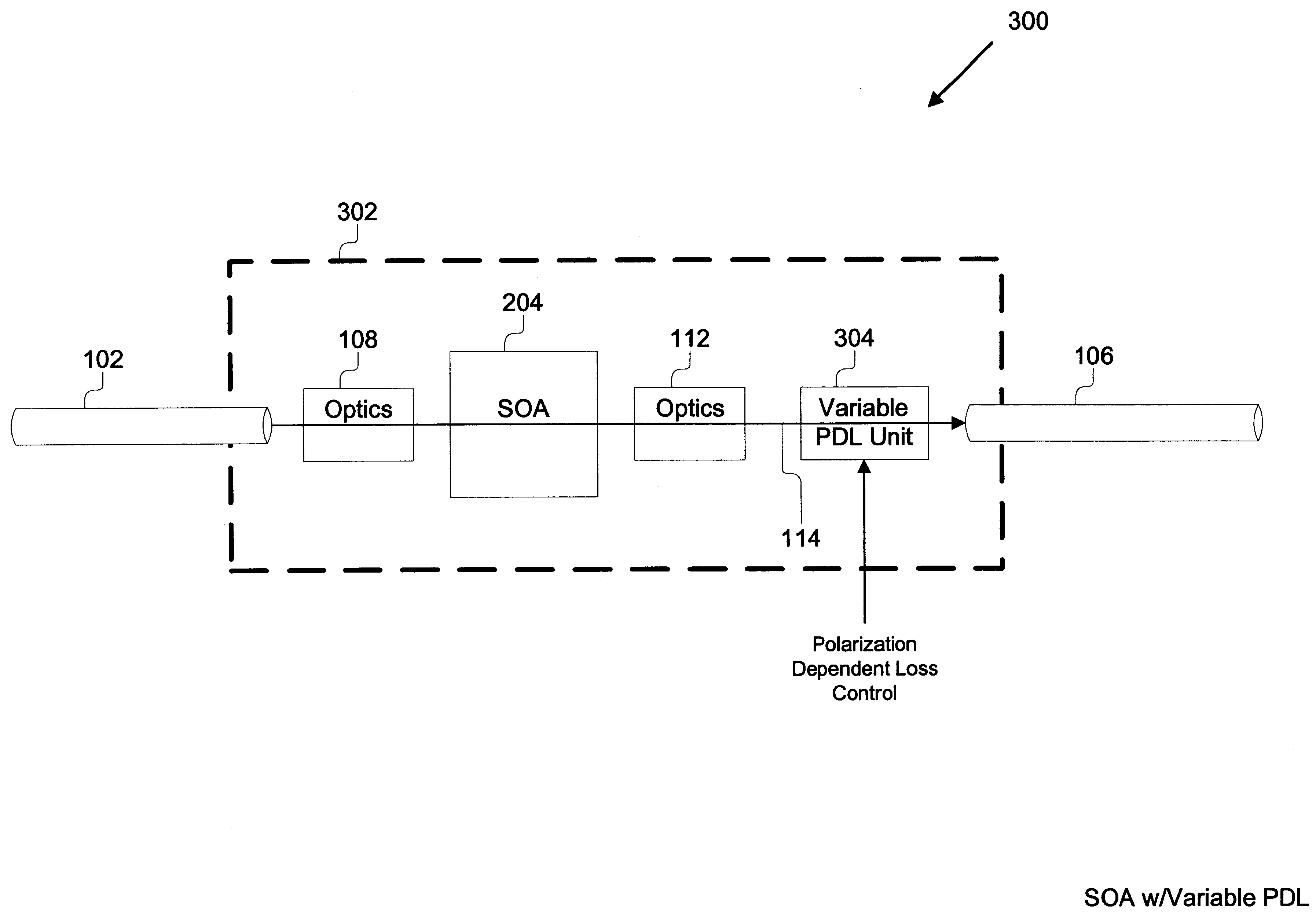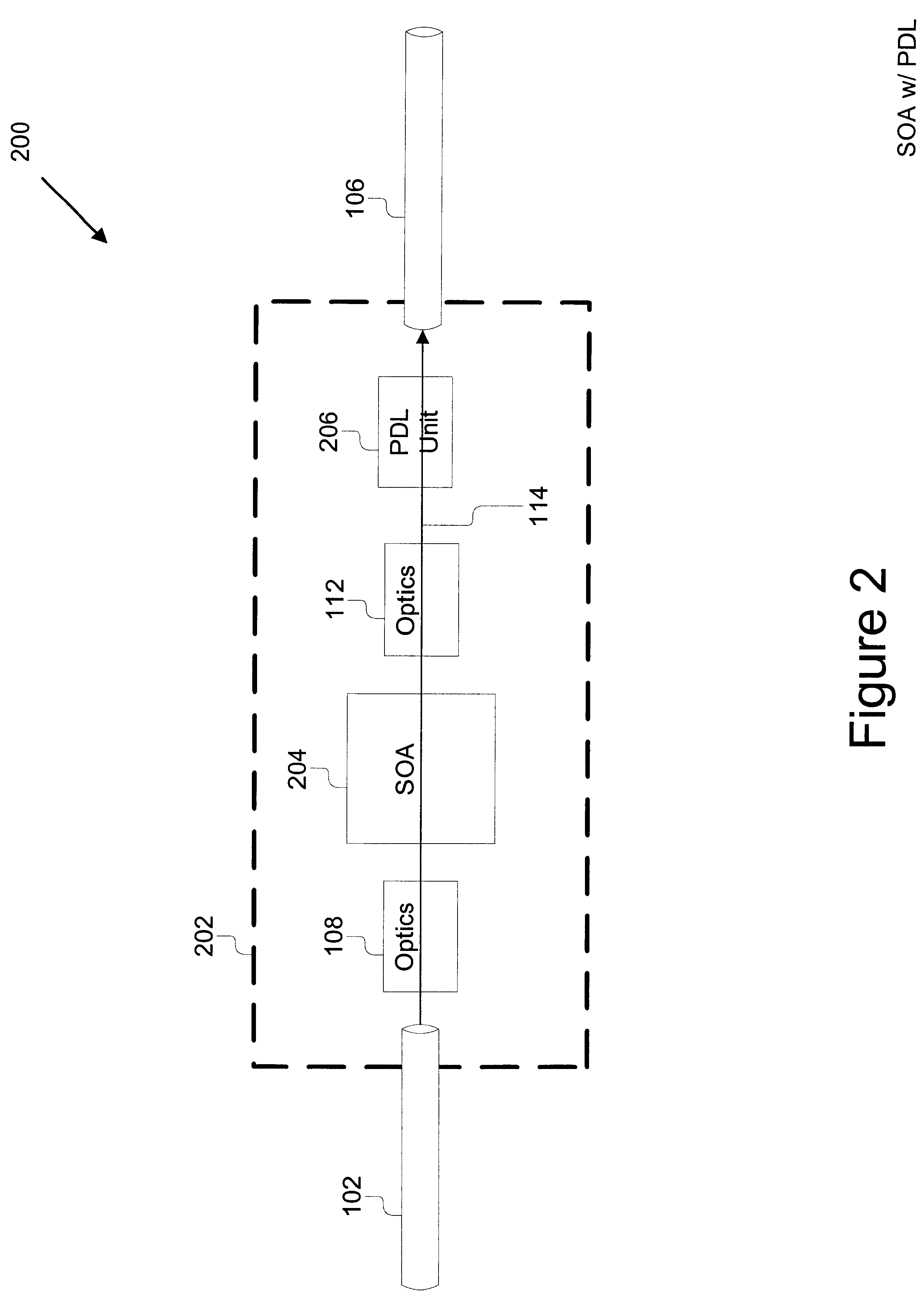Polarization insensitive semiconductor optical amplifier
a semiconductor optical amplifier and polarization-independent technology, applied in semiconductor lasers, laser optical resonator construction, laser details, etc., can solve the problems of polarization dependence/sensitivity, and attenuation of optical signals
- Summary
- Abstract
- Description
- Claims
- Application Information
AI Technical Summary
Problems solved by technology
Method used
Image
Examples
second embodiment
Referring now to FIG. 7, a second embodiment for the PDL unit 206b is shown. The PDL unit 206b provides polarization dependent loss using a polarizer 704. The PDL unit 206b preferably comprises a first lens 702, a polarizer 704 and a second lens 706. The first and second lenses 702, 706 are provided to optically couple the polarizer 704 with the SOA 204 and the fiber 106, respectively. Those skilled in the art will recognize that the second lens may be eliminated because it is redundant with the optics 112. The polarizer 704 is preferably a parallel-metallic-strip polarizer. Such polarizers are generally described in p. 14-24 of the Melles Griot catalogue titled "Optics Guide 5", copyright 1990. Such parallel-metallic-strip polarizers are formed using thin film technology. In contrast to the prior art, however, the polarizer 704 used in the present invention is modified to provide only a minimal or needed amount of rejection. This can be accomplished by increasing the distance, d, b...
fifth embodiment
FIG. 10A is a block diagram of a fifth embodiment for a polarization dependent loss unit 206e attached to a preferred embodiment for the SOA 204a. In this embodiment, the PDL unit 206e takes the form of a coating added to the SOA chip 204a. A preferred embodiment of the SOA chip 204a is shown in FIG. 10A. The SOA chip 204a preferably has a "tilted stripe" 1002. The SOA stripe 1002 is preferably tilted on the wafer 1004 by 7 to 12 degrees, .phi., from the cleave planes 1006 in order to prevent lasing. As the TE and TM signals leave the SOA chip 204a on the output end, some of the light reflects from the semiconductor / air interface, and is lost. This loss is polarization dependent. Thus, depending on the coating 206e applied to the output end of the SOA chip 204a, the polarization dependence can be adjusted. The PDL unit 206e is preferably a coating of Aluminum-Nitride film, but could be any film used for anti-reflection coating the facets, including multiple-layer films utilizing two...
PUM
 Login to View More
Login to View More Abstract
Description
Claims
Application Information
 Login to View More
Login to View More - R&D
- Intellectual Property
- Life Sciences
- Materials
- Tech Scout
- Unparalleled Data Quality
- Higher Quality Content
- 60% Fewer Hallucinations
Browse by: Latest US Patents, China's latest patents, Technical Efficacy Thesaurus, Application Domain, Technology Topic, Popular Technical Reports.
© 2025 PatSnap. All rights reserved.Legal|Privacy policy|Modern Slavery Act Transparency Statement|Sitemap|About US| Contact US: help@patsnap.com



